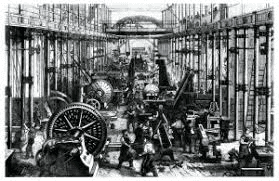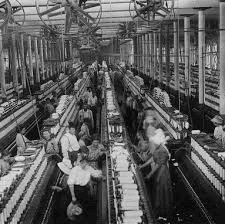|
True or False: The imposition of tariffs on Indian textiles by British rule helped to enhance the competitiveness of Indian cloth in the market. |
Card: 1 / 46 |
|
False. The imposition of nearly 80 percent tariffs on Indian textiles made Indian cloth uncompetitive.  |
Card: 2 / 46 |
|
True or False: The British colonial rule in India led to a significant modernization of Indian industrial sectors. |
Card: 3 / 46 |
|
What led to the realization of India's economic decline during the British rule? |
Card: 5 / 46 |
|
The decline of many cities and traditional industries, leading to a loss of livelihoods.  |
Card: 6 / 46 |
|
False. It caused great insecurity to the tenants who lost all their traditional rights to land. |
Card: 8 / 46 |
|
Fill in the blank: The peasant suffered under a triple burden of the Government, zamindar, and ___. |
Card: 9 / 46 |
|
What factors contributed to the stagnation and deterioration of agriculture during this period? |
Card: 11 / 46 |
|
Fill in the blank: The emergence of intermediaries in land tenure systems led to increased ___ for peasants. |
Card: 15 / 46 |
|
True or False: The commercialization of agriculture in India primarily benefited local farmers. |
Card: 17 / 46 |
|
Fill in the blank: Commercial crops such as cotton, jute, and ___ were more profitable than food grains. |
Card: 19 / 46 |
|
What was the trend of agricultural commercialization in India during the colonial period? |
Card: 21 / 46 |
|
The trend involved the shift towards growing cash crops for export rather than food crops for local consumption.  |
Card: 22 / 46 |
|
Fill in the blank: The plantation sector of Indian agriculture, including tea and coffee, was primarily owned by ___. |
Card: 23 / 46 |
 Unlock all Flashcards with EduRev Infinity Plan Starting from @ ₹99 only
|
|
True or False: The cultivation of spices and fruits in India did not cater to a wider market. |
Card: 25 / 46 |
|
False. It catered to a wider market and was part of the commercialization trend. |
Card: 26 / 46 |
|
The destruction of the textile industry in India is an example of ___ deindustrialization. |
Card: 27 / 46 |
|
True or False: The first cotton textile mill in India was established in 1855. |
Card: 29 / 46 |
|
Fill in the blank: The shipbuilding industry was particularly prominent in regions such as ___ and ___. |
Card: 33 / 46 |
|
Identify one major consequence of the British colonial policy on Indian industry. |
Card: 35 / 46 |
|
Fill in the blank: The first jute mill in India was established in ___ in 1855. |
Card: 37 / 46 |
|
The theory proposed by Dadabhai Naoroji regarding the economic conditions in India is known as the theory of ___ . |
Card: 39 / 46 |
|
True or False: The development of railways in India was aligned with the country's industrial needs. |
Card: 41 / 46 |
|
False. The development of railways was not coordinated with India's industrial needs.  |
Card: 42 / 46 |
|
The essence of nineteenth-century colonialism in India involved transforming the country into a supplier of ___ and ___ for the British metropolis. |
Card: 43 / 46 |




































